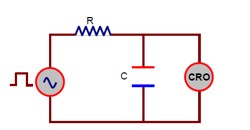NCERT Class 12 Physics
Get insights from 15 questions on NCERT Class 12 Physics, answered by students, alumni, and experts. You may also ask and answer any question you like about NCERT Class 12 Physics
Follow Ask QuestionQuestions
Discussions
Active Users
Followers
New answer posted
2 months agoBeginner-Level 5
Shiksha provides NCERT Notes for all class 11 and 12 important topics. We have covered all concepts in detail. You can check the key characteristics below;
- We have covered the topic-wise NCERT Notes of all NCERT textbook chapters, including deleted topics and chapters.
- These NCERT Notes are prepared keeping in mind the CBSE Exam pattern and CBSE syllabus 2025-2026.
- We have designed these NCERT Notes as revision notes along with a concise summary.
- You will also get the NCERT-based definition and derivation along with basic problem-solving techniques.
- We have also included solved JEE and NEET questions for holis
New answer posted
2 months agoBeginner-Level 5
The direction of the net magnetic force is always perpendicular to the plane of current-carrying conductors. The direction of the magnetic force is determined through the right-hand rule.
The right-hand thumb rule states that if you wrap a wire in a way that the thumb points towards the flow of current. Then your curled fingers represent the direction of the field lines of the magnetic field
New answer posted
2 months agoBeginner-Level 5
The "ampere" was defined based on the magnetic interaction. The scientific community used the magnetic force between two parallel current-carrying conductors placed at a distance. Below is the definition of 1 ampere, based on this concept.
1 Ampere is the constant current that produces a magnetic force of exactly when two infinitely long, straight, parallel conductors are placed one meter apart in vacuum. |
New answer posted
2 months agoBeginner-Level 5
The exact formula for the magnetic force per unit length between two parallel current-carrying conductors:
For more information, check: Force between parallel conductors
New answer posted
2 months agoContributor-Level 7
If you want the Current Electricity Class 12 important questions, then check the Class 12 Physics previous year question paper pdf. Also, focusing on the Class 12 Physics past 5 years of exam questions to identify the current electricity class 12 important questions. Well, we have framed all the important questions in the NCERT Physics Class 12 Current Electricity solution pdf, which you can easily download through this article.
New answer posted
2 months agoContributor-Level 7
Before attempting the NCERT solutions PDF, solve the textbook exercise questions. Hereafter, verify your answer using the NCERT Class 12 Physics Ch 3 solutions pdf. Following a systematic approach to solve a problem will help to score good marks in the CBSE Class 12 board exam.
New answer posted
2 months agoContributor-Level 7
Class 12 Physics Chapter 3 Current Electricity is important for the board exam. The weightage of the chapter is 8-10%. When you practice the Current Electricity class 12 NCERT solutions, you get an overview of your preparation. If you are lacking in any concept, then it helps to build the conceptual knowledge.
New answer posted
3 months agoBeginner-Level 5
The best conductor of electricity is Silver (Ag) at room temperature. It is not used in normal wiring even though being the best conductor because of its high cost.
Electrical Conductivity ():
Electrical Resistivity (): (the lowest among all metals)
New answer posted
3 months agoWhy do conductors have a positive charge, a lack of free electrons, not as excess number of protons?
Beginner-Level 5
This is an interesting question! Even though a proton has a positive charge, the net positive charge in a conducting material is always due to the removal of free electrons.
This happens due to the availability of only free electrons in all conductors. Since protons are present in the nucleus, they can not roam freely in the conductor, as electrons travel freely in the conductor due to their presence in the outer shell.
Taking an Exam? Selecting a College?
Get authentic answers from experts, students and alumni that you won't find anywhere else
Sign Up on ShikshaOn Shiksha, get access to
- 65k Colleges
- 1.2k Exams
- 679k Reviews
- 1800k Answers



